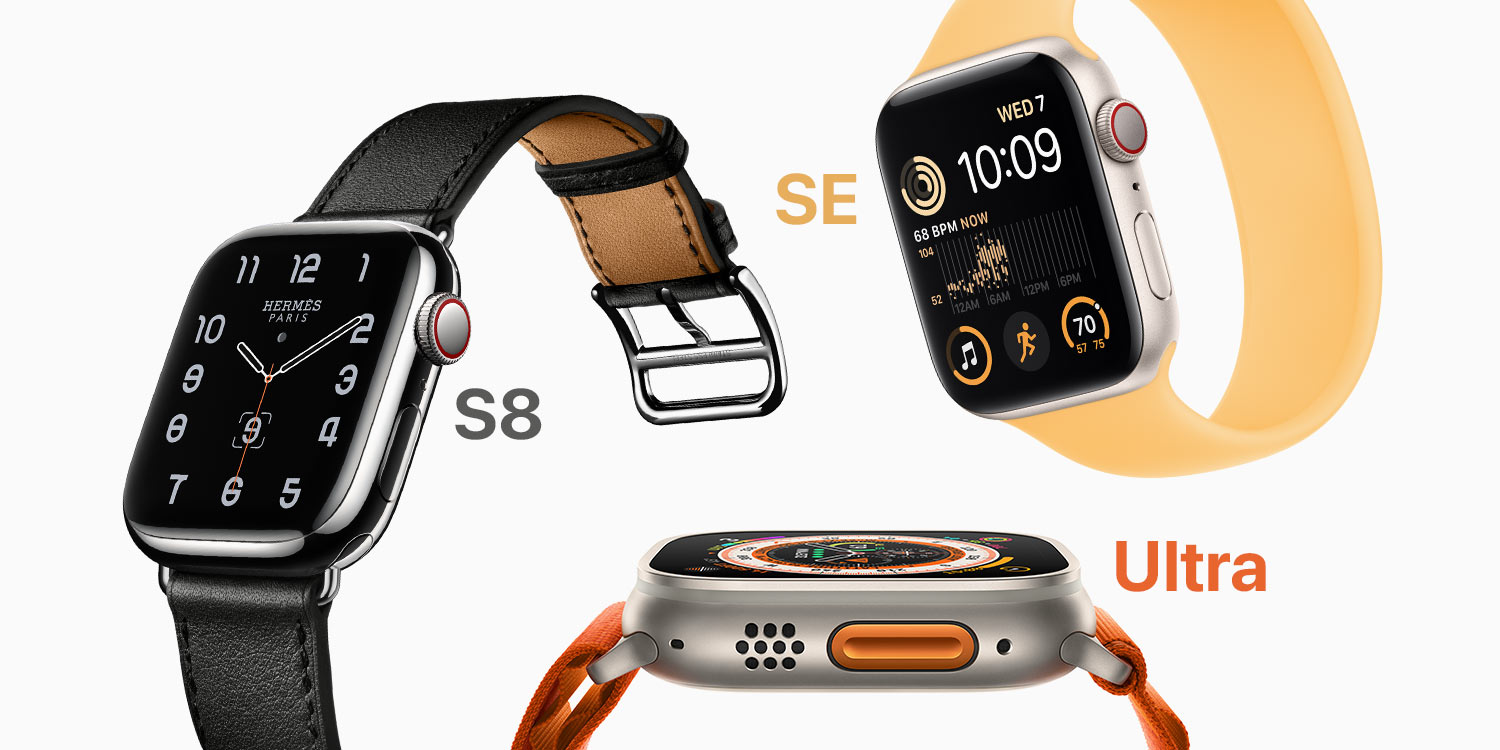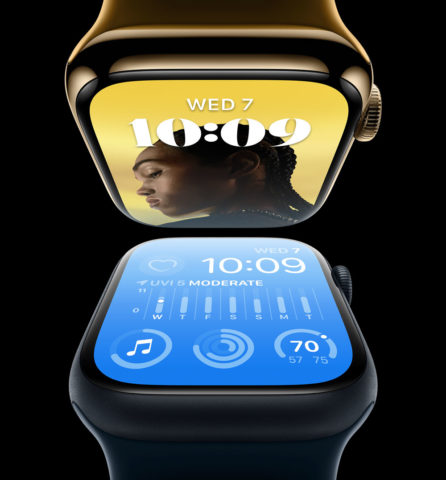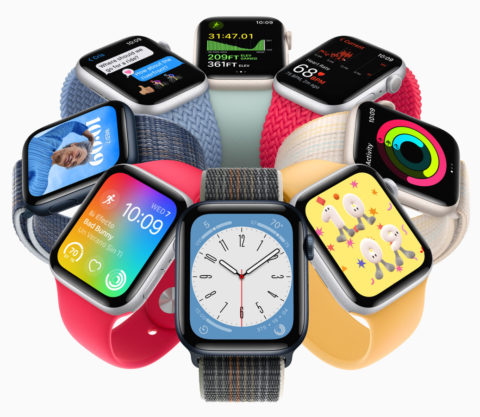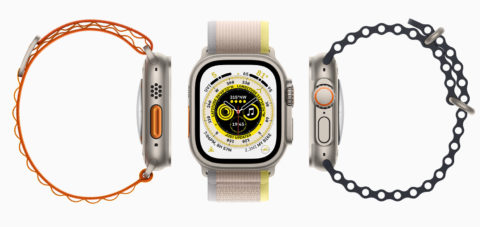Apple’s September 2022 event didn’t just cover its four new iPhones, but also ushered in the biggest ever change to the Apple Watch lineup. There are now three new smartwatches on offer, and with the feature sets varying between models and prices ranging from $299 to $799, choosing which one to buy can be a minefield. So let’s take a closer look at all three.
Understanding the lineup
At its most basic, the intent behind each model is at least easy to grasp. There’s the regular one (Apple Watch Series 8), the budget one (Apple Watch SE), and the rugged outdoorsy one (Apple Watch Ultra). There’s a great comparison page on the Apple Store website that breaks down all the technical specs of each model, but we’ve recapped the similarities and differences below for anyone wanting to know more about what’s new this year.
Apple Watch Series 8
This is Apple’s core offering, and it’s a fairly modest upgrade over the Series 7. The design hasn’t changed since last year, with the same always-on wrap-around display available in nice big 41mm and 45mm sizes.
Adding to the existing heart rate and ECG sensors is a new body temperature sensor, which is particularly helpful for women’s health. It can be used to predict periods, estimate ovulation windows, and log cycle deviations.
Then there’s Apple’s new Crash Detection functionality, which will automatically call emergency services if a severe car crash is detected by the sensors in the watch. This feature can work by itself or in combination with an iPhone 14.
Series 8 also adds a faster processing chip, and a low power mode that extends battery life to up to 36 hours, at the expense of some features like the always-on display.
As ever, there are new watch faces, new finishes, and new bands to choose from too – but nothing that affects functionality.
Apple Watch Series 8 starts at $399 and is available to order right now, with in-store availability the following week.
Apple Watch SE
The second-generation Apple Watch SE is another budget-friendly option for those who want the convenience of a smartwatch but don’t need all the fancy features from the standard model, or for those buying for family members they need to keep tabs on.
Despite its much lower price tag, the SE includes the same processor as the Series 8 and the Ultra, meaning its should offer impressive performance for years to come. But money is saved elsewhere, with older parts used and some features missing entirely.
For example, Apple Watch SE uses the old-style 40mm and 44mm displays with chunky bezels and no always-on option. It’s not dust resistant like the other models, but it’s waterproof enough to take swimming.
There’s no Blood Oxygen or ECG support, but the basic heart rate and cardio tracking remains, as do all the standard sensors. And battery life is comparable to Series 8, though without a fast charge option.
All that comes at a much lower start price of $249, and it’s also available to order immediately with shipping from September 16.
Apple Watch Ultra
This is where things get really interesting. Apple has released a new premium-priced entry in the line-up, trying to enter a market dominated by high-end outdoor fitness watches from the likes of Garmin. It adds a ton of new features for tracking extreme activities, sports, hikes, and general adventuring. It’s a lot hardier than the standard models, too.
That’s because a rugged new aerospace-grade titanium casing houses a whopping 49mm display, a larger digital crown, and a customizable action button. These changes are made with ease of use in mind, so you can still have a chance at operating the thing while taking part in extreme activities, or wearing gloves in extreme cold, or swimming in extreme… water? You get the picture.
It’s tested not just for water resistance up to 100m deep, but also for durability against high altitudes, extreme temperatures, shock, immersion, freezing, and vibrations. The flat sapphire crystal display is way more robust than the regular model, and twice as bright.
A much larger battery offers twice the battery life of the Series 8 at 36 hours – or 60 hours in low power mode. Still not a long time in comparison to the weeks on offer by some alternative smartwatches, but still impressive considering everything Apple Watch can do that others can’t.
Additional microphones combine for much clearer calls in bad weather, and Apple says it features its most accurate dual-frequency GPS to date. There’s a new Wayfinder watch face, designed for the Ultra’s bigger display and featuring a compass at its center, and three new watch bands made to withstand different extreme environments. Basically, this thing does a lot.
Apple Watch Ultra will be the obvious choice for athletes and outdoorsy types who want to track as many metrics as possible, but it might also draw in customers who simply want the biggest and best Apple has to offer. For most users though, it’s probably overkill.
It’s now Apple’s most expensive smartwatch offering, starting at $799 – but that’s cheaper than the ill-fated Apple Watch Edition, which cost more and offered much less. It’s also a pretty reasonable price when compared with similar ‘extreme’ smartwatches, which often cost upwards of $1000. It will be interesting to see whether that will be enough to boost sales of a fairly niche model, but it’s certainly the most exciting addition to the lineup since the very first Apple Watch.
Apple Watch Ultra can be ordered now, and will start shipping from September 23.




